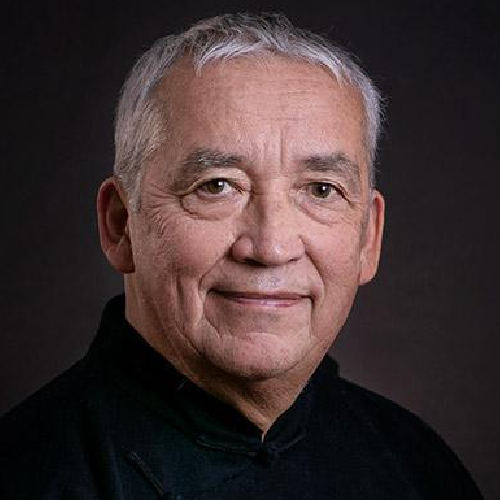Gross National Happiness: A New Model for Progress
What if, in addition to economic growth, we measured progress by how happy people in our society are?
Some years ago, the king of Bhutan wondered what it would mean to implement a "Gross National Happiness" measurement. But how do we measure happiness? What does it mean to be happy? Tho Ha Vinh, a teacher and administrator who was working with the International Red Cross, went to Bhutan to help figure out how such a framework might be implemented. I spoke to Tho Ha Vinh recently on my podcast.
From Dancer and Teacher to Humanitarian Leader
Tho's father was a Vietnamese diplomat and his mother was French. When it was time to go to college, Tho thought of going into medicine but instead chose to study Eurythmy, a type of dance developed by Rudolf Steiner. He became a performer and teacher. Tho believes young people should follow their passions. "When I look at my path from the perspective of my parents, I'm amazed how easily they accepted it," he said, noting that his father had faith in him. If your direction isn't taken out of an inner aspiration, aligned with values and ideals, Tho said, "then work life can become very burdensome."
Tho's experiences as a teacher led him to administration, and he went on to earn a PhD in psychology and education. From there he took on a role at the International Red Cross training humanitarian workers, where he witnessed firsthand the devastating effects of violence around the world. While his father was Vietnamese, Tho had been relatively insulated from the effects of the war there, but it did impact his extended family.
While Tho recognized the importance of his work at the Red Cross, he wanted to find ways to transform societies to prevent the devastation of war on people and the planet. "When you're a humanitarian worker, you always work with the consequences," Tho explained. He wanted to "go upstream" and help solve the problem at its root, to address the structural issues that lead to war and destruction. He explained that while his Buddhist practice taught him how to cultivate peace on an inner level, he wanted to bring it to the level of society. That led him to Bhutan and ultimately to head up the Gross National Happiness initiative.
From Gross National Product to Gross National Happiness
Fundamentally, the Gross National Happiness project challenges the measurement of progress according to economics. Instead, it seeks to measure progress according to happiness, or wellbeing. "What's most important is the ecosystem of our planet," Tho explained. Humanity is just one part of that ecosystem, and economics is a subsystem of that. In elevating the economic system above the systems of humanity and the planet, we've lost sight of what's truly important.
"The fundamental idea of Gross National Happiness is the idea that the center of attention should be the happiness of people and the wellbeing of all life forms," Tho said. All subsystems should be in service to this purpose. Bhutan had already started implementing structures toward this goal. The king of Bhutan, as a young man in the 1970s, formulated a mission to implement Gross National Happiness, in addition to Gross National Product, as a measurement of the success of a society. It was passed as a resolution in the United Nations in 2011. But the people working on this idea realized they needed a way to actually measure Gross National Happiness, which led to the GNH Index. The index they created asks, how do we ensure the wellbeing of people and our planet?
Measuring Happiness
Tho acknowledged that the project of measuring GNH wasn't easy. The first step was figuring out "what do we mean by happiness?" They concluded that "it's about being happy, not just feeling happy." He explained that the three components of happiness and wellbeing are: living in harmony with oneself and in alignment with your values; living in harmony with and caring for others; and living in harmony with and caring for nature and our planet. The index was developed to measure all the elements that contribute to these three areas. Tho describes the matrix and tools he developed in his book The Culture of Happiness: How To Scale Up Happiness From People to Organizations.
Happy Schools
Following his time in Bhutan, the first place Tho worked on implementing these principles was in schools. Acting in response to a U.N. recommendation that schools in Southeast Asia start to focus more on students' wellbeing, Tho and his group began a pilot program in Vietnam called Happy Schools.
The first practice they teach in the program is mindfulness to help offset the overwhelm of information children now encounter. Through mindfulness children learn "to slow down and observe. . . and become more aware of their emotions." They then teach how to consciously cultivate emotions that help support wellbeing.
Next, they teach how to cultivate healthy relationships, and then move on to focusing on caring for nature and the planet. Tho notes that, in teaching the latter, it is not enough to just tell kids what to do; children need to develop "a heart connection" to nature, which is especially important for children living in cities.
The program has had success, with positive results experienced by children, teachers, and parents who reported stronger wellbeing and resilience, even during the pandemic. Happy Schools programs are now being implemented in Switzerland and Germany.
Technology and Education
Tho thinks that emerging technologies like advances in artificial intelligence are fascinating and represent the expression of human intelligence, but they, like shifting the index of measuring progress from economics to wellbeing, also call for a shift in how we educate our children.
We need to "take greater care to develop fundamental human qualities" like social-emotional learning, self-knowledge, relationship building, and ethical values. Therefore it becomes critical that we should refocus education more on these elements. We need to make sure we are addressing the integration of artificial intelligence in schooling so people, not machines, remain at the center, Tho said.
Happy Workplaces
The next question Tho and his team asked was, is it possible to implement these principles in the business world? Because the business sector in Bhutan is small, they found an energy company in Thailand that expressed interest and implemented it.
"The whole idea is to build on two aspects," Tho explained. "The inner transformation and the structural, system transformation. This will lead to something sustainable." Tho and his team worked with management and employees to build an inner culture but also looked at the company's systems with the aim of transformation. After working with the company in Thailand, they went on to work with the largest shoe company in Vietnam, Bitis, which also reported positive results. Tho further observed that the process not only helped the company be more resilient during the pandemic, but it also enabled people in the company to help others in the community, which in turn earned them trust. Tho believes implementing these practices are effective because it helps build "a more meaningful work environment" where people realize they are also contributing to society. Management is "based on values, trust, compassion and kindness." This helps drive stronger employee engagement.
The full process of implementing the happiness principles in a company takes three years and requires "a lot of commitment and courage" along with willingness to put time in. But "the fruits can be seen quite soon," Tho said. After a survey, the leadership determines areas where the company could do more. For example, Bitis started offering educational workshops during working hours for the many young women with children who worked there. Another aspect they sought help with was physical health for assembly workers, offering workshops and services in areas like massage and movement. By looking at ways to serve the frontline workers, the leadership communicated that they cared for and wanted to support their employees.
In 2020, imageOne implemented a version of the happiness survey and found the results to be incredibly insightful. While imageOne has done surveys in the past, the happiness version took a much deeper dive into the welbeing of the team members as well as their feedback on important items such as corporate governance and involvement in the communites we serve. The timing of the first survey was during the pandemic and enabled the leadership team to take a valuable pulse on what reasonable actions could be taken to help the team members through a very challenging time.
Gratitude
Unsurprisingly, Tho believes in the value of adopting a mindset of gratitude. He shares his experience of traveling in Bhutan with a Benedictine monk, Dr. David Steindl-Rast, who saw the world with enduring gratitude and wonder. Despite being 90 years old, he took the difficulties of traveling with grace; instead of bemoaning the situation of being stuck on a road, he expressed gratitude for the chance to walk and appreciate the landscape.
Gratitude, when practiced with conscious intention, helps you live a life with more joy. "Gratitude is really one of the keys to happiness," Tho said.
The conversation with Tho Ha Vinh continues on the Leading with Genuine Care podcast, where we talk more about happiness, wellbeing, and his experiences as a student of Thich Nhat Han. Connect with me on Twitter and LinkedIn and keep up with my company imageOne.

